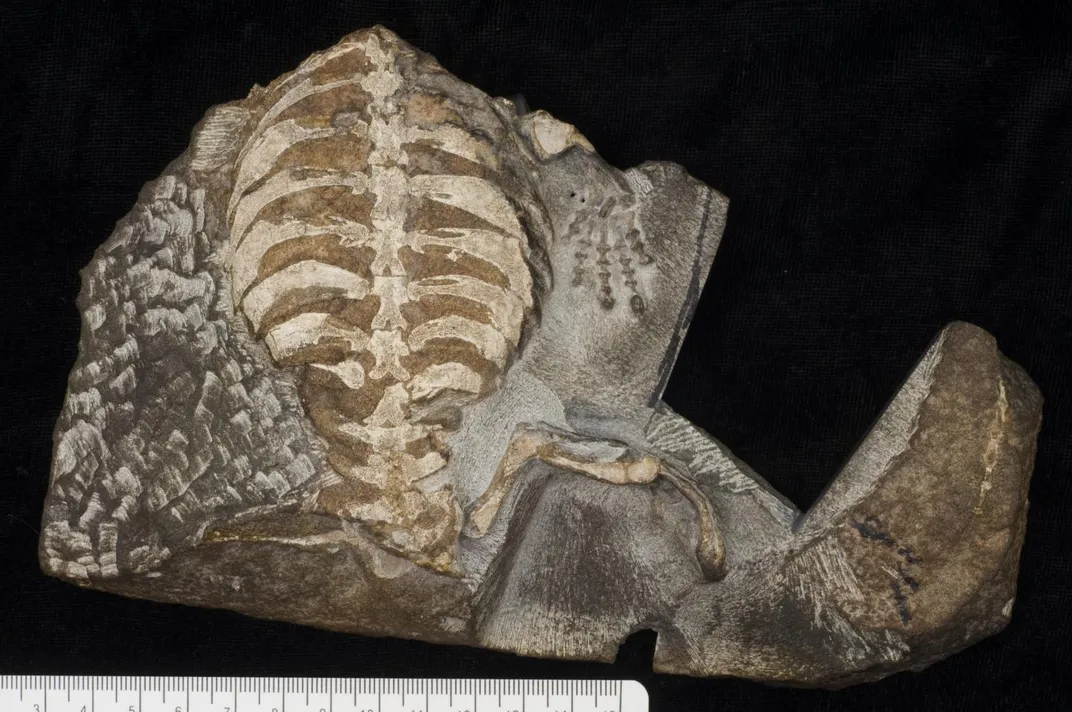Why the Turtle Grew a Shell—It’s More Than Safety
Its armor may have developed for more than safety
/https://tf-cmsv2-smithsonianmag-media.s3.amazonaws.com/filer/ff/3c/ff3c0504-5f7b-480c-bf11-a73e8741f292/119912_web.jpg)
Nothing says safety in the animal kingdom quite like the turtle’s shell. But scientists have long puzzled over how the slow-moving reptiles evolved their iconic defenses. After years of studying fossils left behind by ancient turtles and their ancestors, a group of scientists have come to the conclusion that their shells weren’t initially for protection: they were meant for digging.
The key to this discovery came from a rare, intact fossil of one of the earliest-known turtles, Eunotosaurus africanus. The broad-bodied, palm-sized lizard lived about 260 million years ago and lacked a shell, Erik Shilling writes for Atlas Obscura. But while researchers mostly ignored this lizard for almost a century, the discoveries of several intact Eunotosaurus skeletons in South Africa’s Karoo Basin prompted researchers from the University of Witwatersrand to take another look.
“When I went to these turtle-specific conferences and I talked to people, they automatically said it was for protection,” Tyler Lyson of the Denver Museum of Nature and Science, who led the study, tells Ed Yong for The Atlantic. “But that never made any sense.”
Scientists have long known from studying fossils and the development of modern turtles that their shells were originally formed as the turtle’s ribs became broad and flat, eventually fusing. However, as Lyson tells Yong, this seemed odd for a defense mechanism. While modern turtle shells are nigh impenetrable for predators, ribs and the muscles around them play a big part in breathing by helping to inflate and deflate the lungs. As ancient turtle’s ribs fused into the shells they are known for today, they would have had a harder time breathing. All the while, as their midsections stiffened, they would have become slower.
"The integral role of ribs in both locomotion and breathing is likely why we don't see much variation in the shape of ribs," Lyson says in a statement. "Ribs are generally pretty boring bones. The ribs of whales, snakes, dinosaurs, humans, and pretty much all other animals look the same. Turtles are the one exception, where they are highly modified to form the majority of the shell."

Euntosaurus may not have had a shell, but it did have noticeably broad and flat ribs. After years of studying specimens, including one particularly intact one discovered by a then eight-year-old South African boy, Lyson realized that these lizards were diggers who used their wide bodies to anchor themselves as they burrowed into the soft dirt.
"Why the turtle shell evolved is a very Dr. Seuss-like question and the answer seems pretty obvious—it was for protection,” Lyson says in a statement. “But just like the bird feather did not initially evolve for flight—we now have early relatives of birds such as tyrannosaur dinosaurs with feathers that definitely were not flying—the earliest beginnings of the turtle shell was not for protection but rather for digging underground to escape the harsh South African environment where these early proto turtles lived."
While more research needs to be done to determine whether the earliest turtles known to have shells were diggers themselves, it just goes to show how adaptable nature can be.